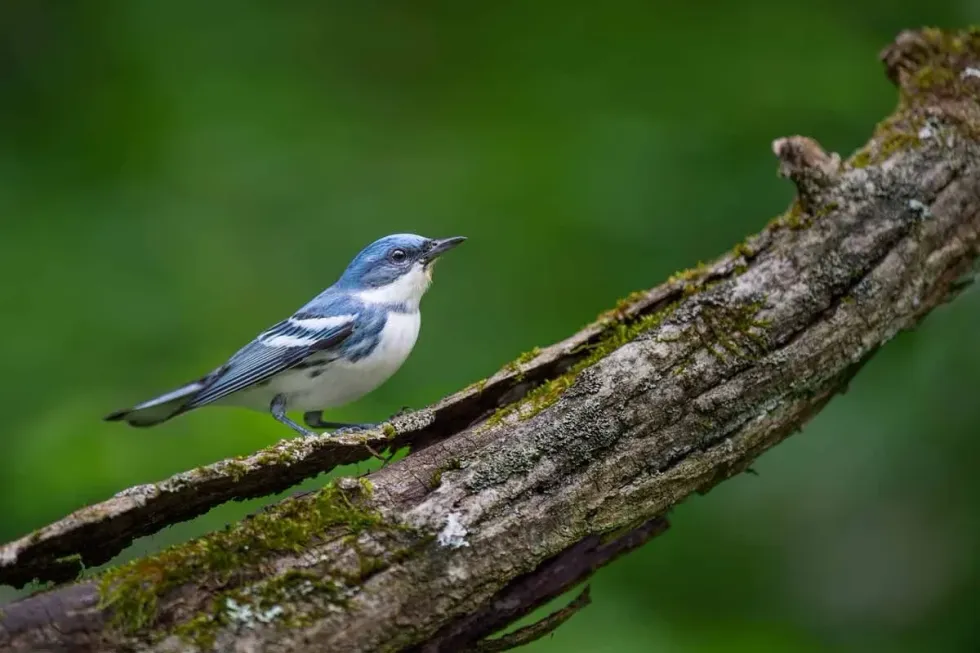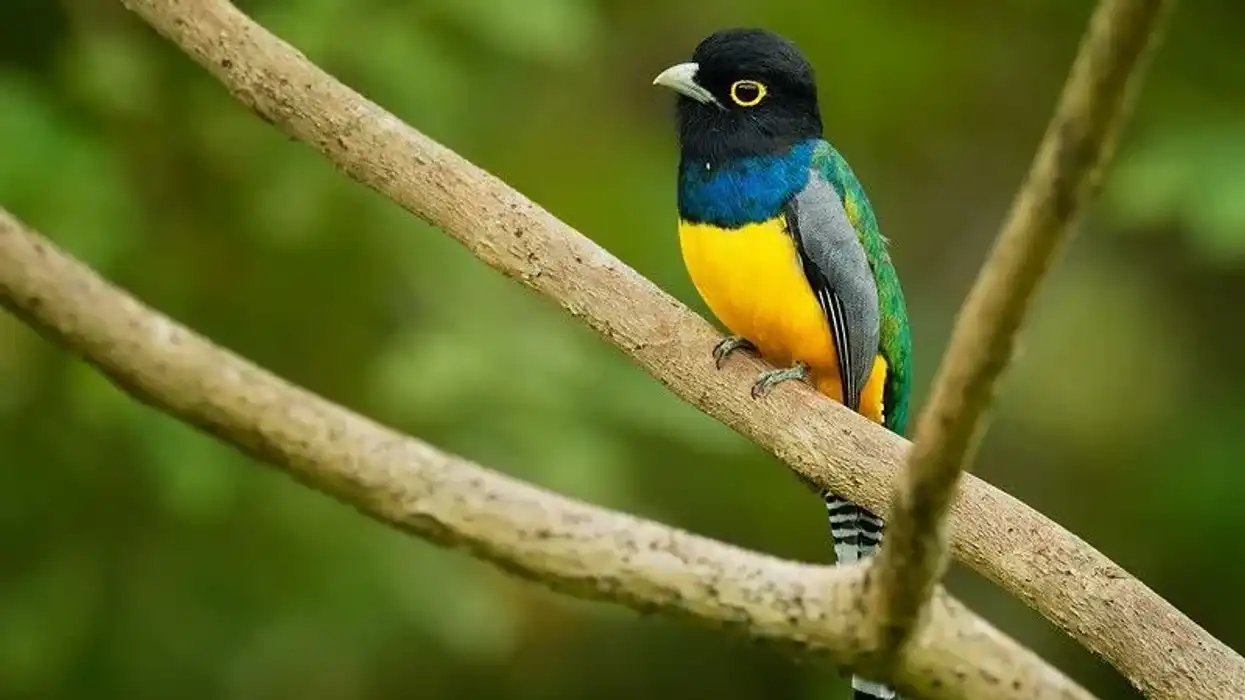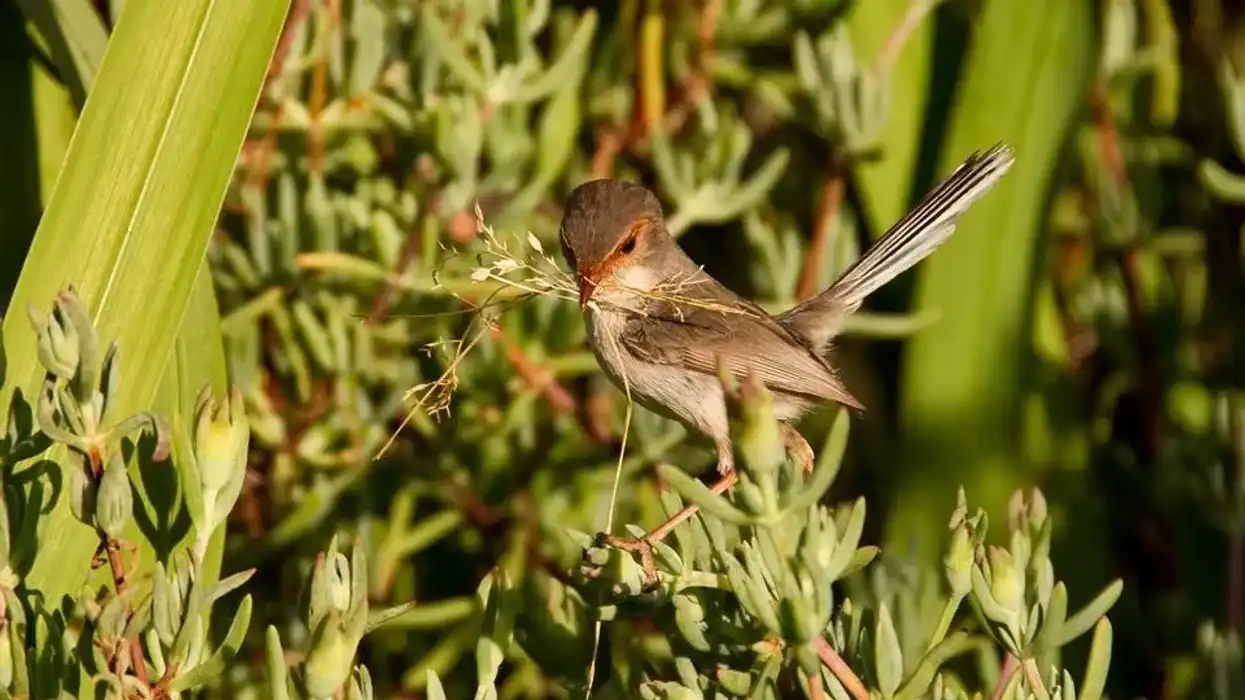If reading about various species of birds excites you, then this is just the right place to be! The section below talks about a species of bird named the cerulean warbler.
This bird species is known all around the world for its beautiful plumage and its altering ranges. Continue reading for more interesting facts about the cerulean warbler. If you like this article, you could also try our palm warbler and Blackburnian warbler facts.
Cerulean Warbler Interesting Facts
What type of animal is a cerulean warbler?
The cerulean warbler (from the order Passeriformes, family Parulidae) is one among the many small-sized and beautiful North American birds that form the warbler family. These petite birds are blessed with a bright blend of colors, including black and sky blue.
What class of animal does a cerulean warbler belong to?
Cerulean warblers belong to the class Aves in the Animalia kingdom and are well known for their sky-blue and black textured bodies. These birds are found in their natural habitat of deciduous forests in North America.
How many cerulean warblers are there in the world?
The cerulean warbler species of birds have been categorized as Near Threatened by the International Union for the Conservation of Nature. In terms of the number of flying pairs, the population is currently at 570,000 and it is a matter of concern if they continue to decline at this rate.
The main cause of their decreasing numbers is significant habitat loss.
Where does a cerulean warbler live?
These North American birds usually prefer living in slightly elevated places with a minimum elevation of 1600-6000 ft (0.49-1.8 km). They can also be found in evergreen forests and deciduous forests. Their preferred habitats are river valleys, deciduous forests, evergreen forests, and the Andes mountains. However, they tend to migrate to woodlands or wintering grounds for their wintering habitat.
What is a cerulean warbler's habitat?
This species of bird usually prefers to live in slightly elevated places. Their routine winter migration to their wintering grounds is quite famous. This species of bird can be spotted in North America and South America, including Peru, Colombia, and Venezuela.
Who do cerulean warblers live with?
There is no fixed information about whether cerulean warblers (of the order Passeriformes and the family of Parulidae) live alone or in groups. The altering nesting behavior of these birds makes it hard for someone to determine their living habits.
However, these birds tend to stay together in pairs during the mating and breeding season. The breeding season is when many pairs of these birds can be spotted.
These birds are quite friendly and are not affected by human interaction.
How long does a cerulean warbler live?
The warbler (cerulean) tends to have an average lifespan of about five years. Their lifespan depends on whether they live in the wild or captivity as their surroundings tend to affect their lifespan. Also, warblers are affected by bird diseases which can also lead to an untimely death for this species.
How do they reproduce?
The cerulean warbler breeding season starts in May through June. The warbler bird is particular about its place of breeding.
They usually prefer forests and tend to remain in the same forest to breed. During breeding, a male bird tends to sit on top of a canopy of trees and sings a tune while a female is busy building a typical warbler nest.
The nest is generally built on trees approximately 10-40 ft (3-12 m) above ground level. The nest is then covered using sticks and pieces of wood from the forest. The lush forest cover provides a great shelter for cerulean warblers.
A female lays around three to four eggs and they have an incubation period of 11 to 12 days. After this, the cerulean warbler parents feed the newborn for 12 or 13 days.
The breeding range of these birds alters from winter to summer. Throughout the winter and the summer, the range changes from central and eastern United States to Bolivia, the Andes, and southern Venezuela.
What is their conservation status?
The North American cerulean warbler conservation status is marked as Not Threatened by the IUCN (International Union for the Conservation of Nature), although these birds are definitely at risk and have a fluctuating population.
Cerulean Warbler Fun Facts
What do cerulean warblers look like?
These are beautiful small birds with an aesthetic mix of colors. The male and female species of this bird can be easily distinguished by the unique colors of their plumage.
Males tend to have a blue neckband with blue wings and white wing bars just below, while females have a dab of yellow on a bright blue base. They also have two white wing bars. These birds have short tails and round bodies.
How cute are they?
A North American cerulean warbler is one of the most adorable birds to watch. Their size and the beautiful blend of colors on their body makes them all the more adorable. These birds have the cutest set of eyes and their calls act as the cherry on top.
How do they communicate?
The warbler (cerulean) uses tactical and visual forms to communicate with its fellow birds.
How big is a cerulean warbler?
A South American cerulean warbler (Setophaga cerulea) is quite small when compared to a common cerulean warbler. This bird species measures up to 4.3 inches (11 cm) long and weighs approximately 0.3-0.3 oz (8-10 g).
How fast can a cerulean warbler fly?
Both the South American and North American cerulean warbler range of speed is much debated as it hasn't been recorded. However, these birds are great fliers with altering ranges.
How much does a cerulean warbler weigh?
Cerulean warblers are small songbirds that weigh 0.3-0.3 oz (8-10 g).
What are the male and female names of the species?
Cerulean warbler females and males have no separate species names and are both referred to by their scientific name, Setophaga cerulea.
What would you call a baby cerulean warbler?
Baby cerulean warblers are simply known as cerulean warbler chicks.
What do they eat?
These birds prefer catching insects and feeding on them from the upper leaves of tree canopies in a deciduous forest. The chances of them catching prey on the ground are quite low.
They tend to prey on insects, caterpillars, weevils, and beetles. Their diet seems to alter as they adapt to the winter season. During winter, they also feed on plants.
Are they dangerous?
Cerulean warblers are amiable and like to mind their own business, and therefore aren't considered to be dangerous.
Would they make a good pet?
Although this species of bird are known to be quite friendly, they usually prefer living high up in their natural habitats. A cerulean warbler habitat includes deciduous forests and rainforests. The number of these birds kept as pets is quite low. Warblers are a free-living species of bird.
Did you know...
This species of bird migrate to their wintering grounds and can easily be spotted in woodlands or coffee plantations.
The breeding range of this species of bird covers the central and eastern United States. The breeding range shifts to the Andes Mountains, Bolivia, and south Venezuela in the winter.
A cerulean warbler nest can easily be spotted in small trees at a minimum height of 10 ft (3 m) off the ground. In peculiar cases, their nests can also be spotted at heights of up to 40 ft (12.2 m).
These birds also have predators like common birds of prey, foxes, and snakes.
What does a cerulean warbler's call sound like?
The calls of cerulean warblers are quite famous. They sing songs that have three buzzy notes at the start of every tune before gradually scaling up to four notes.
How many eggs do cerulean warblers lay?
A cerulean warbler female makes for a protective mother and, after breeding, she lays two to four eggs.
Here at Kidadl, we have carefully created lots of interesting family-friendly animal facts for everyone to discover! Learn more about some other birds including California quail or great crested flycatcher.
You can even occupy yourself at home by drawing one on our cerulean warbler coloring pages.










